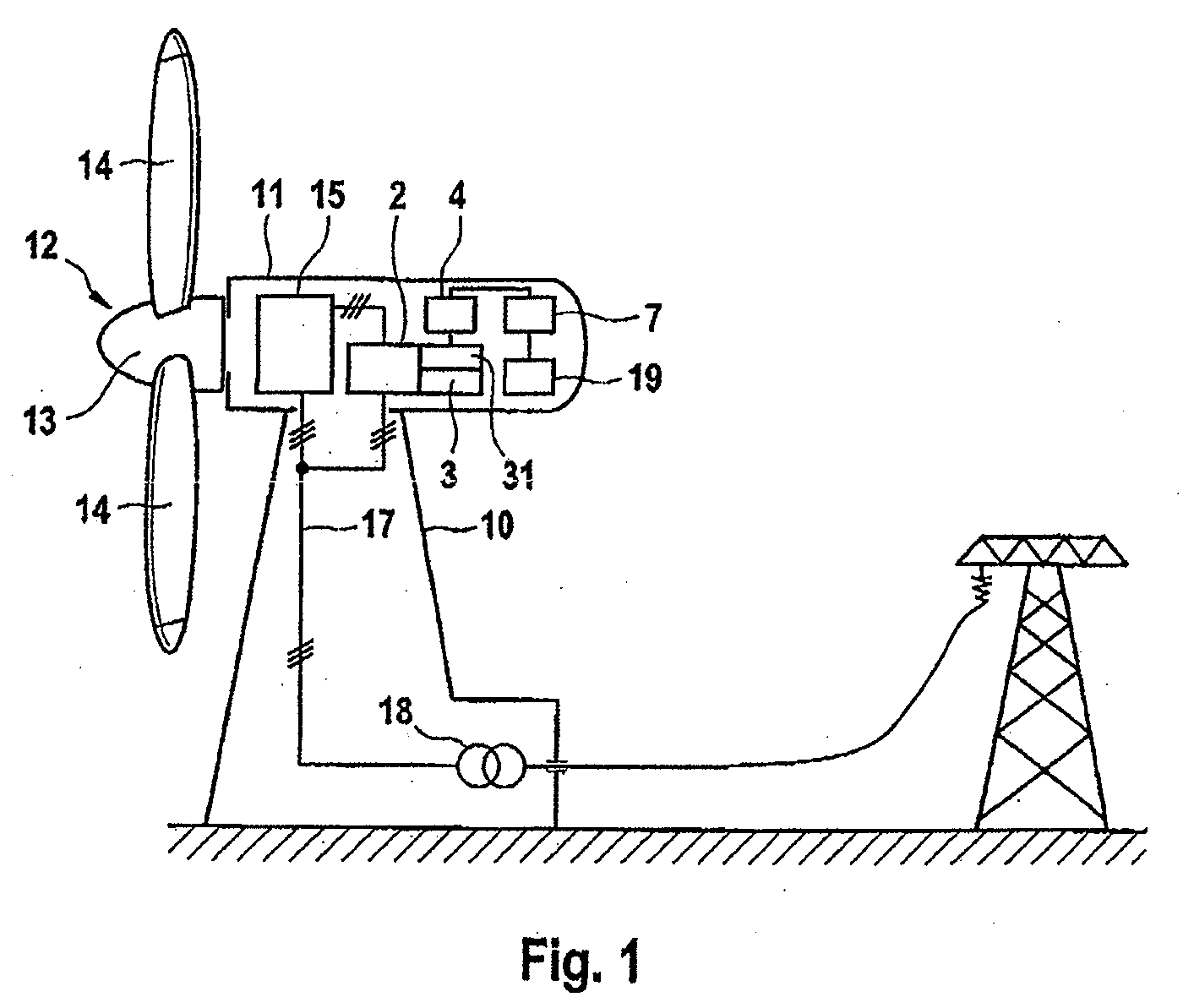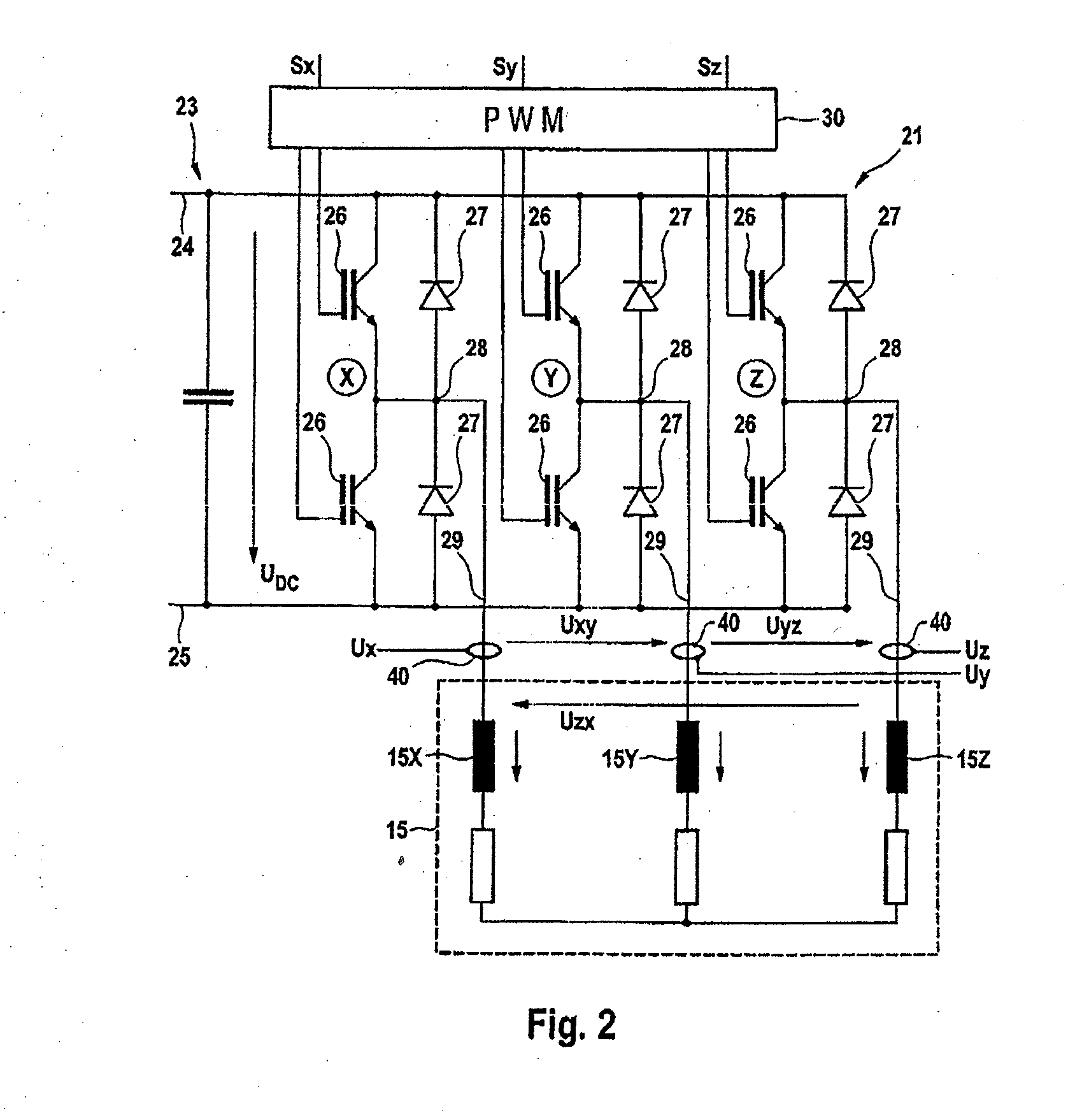Drive circuit and method for inverters of wind energy installations
a technology of driving circuit and wind energy installation, which is applied in the direction of electric generator control, dynamo-electric converter control, greenhouse gas reduction, etc., can solve the problems of affecting the life of switching elements, switching elements which are in each case switched on, and are subject to an increased thermal load, so as to reduce the thermal load on them, avoid switching losses, and reduce the effect of switching losses
- Summary
- Abstract
- Description
- Claims
- Application Information
AI Technical Summary
Benefits of technology
Problems solved by technology
Method used
Image
Examples
Embodiment Construction
[0024]FIG. 1 illustrates one exemplary embodiment of a wind energy installation according to the invention. This comprises a tower 10 on which a pod 11 is mounted and can pivot in the azimuth direction. A wind rotor 12 is arranged such that it can rotate on one end face of the pod 11. This wind rotor 12 comprises a hub 13 with one or more rotor blades 14, and drives a generator 15 via a rotor shaft (which is not illustrated). This generator 15 converts the mechanical power produced by the wind rotor 12 from the wind to electrical power. The generator 15 is a double-fed asynchronous machine, although other generator types may also be provided, in particular synchronous machines. A converter 2 is connected to the generator 15. A line 17 is connected to the generator 15 and to the converter 2 and it trans-ports the electrical power that is produced through the tower 10 to a medium-voltage transformer 18, which is arranged at the foot of the tower 10, in order to be passed on to a netwo...
PUM
 Login to View More
Login to View More Abstract
Description
Claims
Application Information
 Login to View More
Login to View More - R&D
- Intellectual Property
- Life Sciences
- Materials
- Tech Scout
- Unparalleled Data Quality
- Higher Quality Content
- 60% Fewer Hallucinations
Browse by: Latest US Patents, China's latest patents, Technical Efficacy Thesaurus, Application Domain, Technology Topic, Popular Technical Reports.
© 2025 PatSnap. All rights reserved.Legal|Privacy policy|Modern Slavery Act Transparency Statement|Sitemap|About US| Contact US: help@patsnap.com



